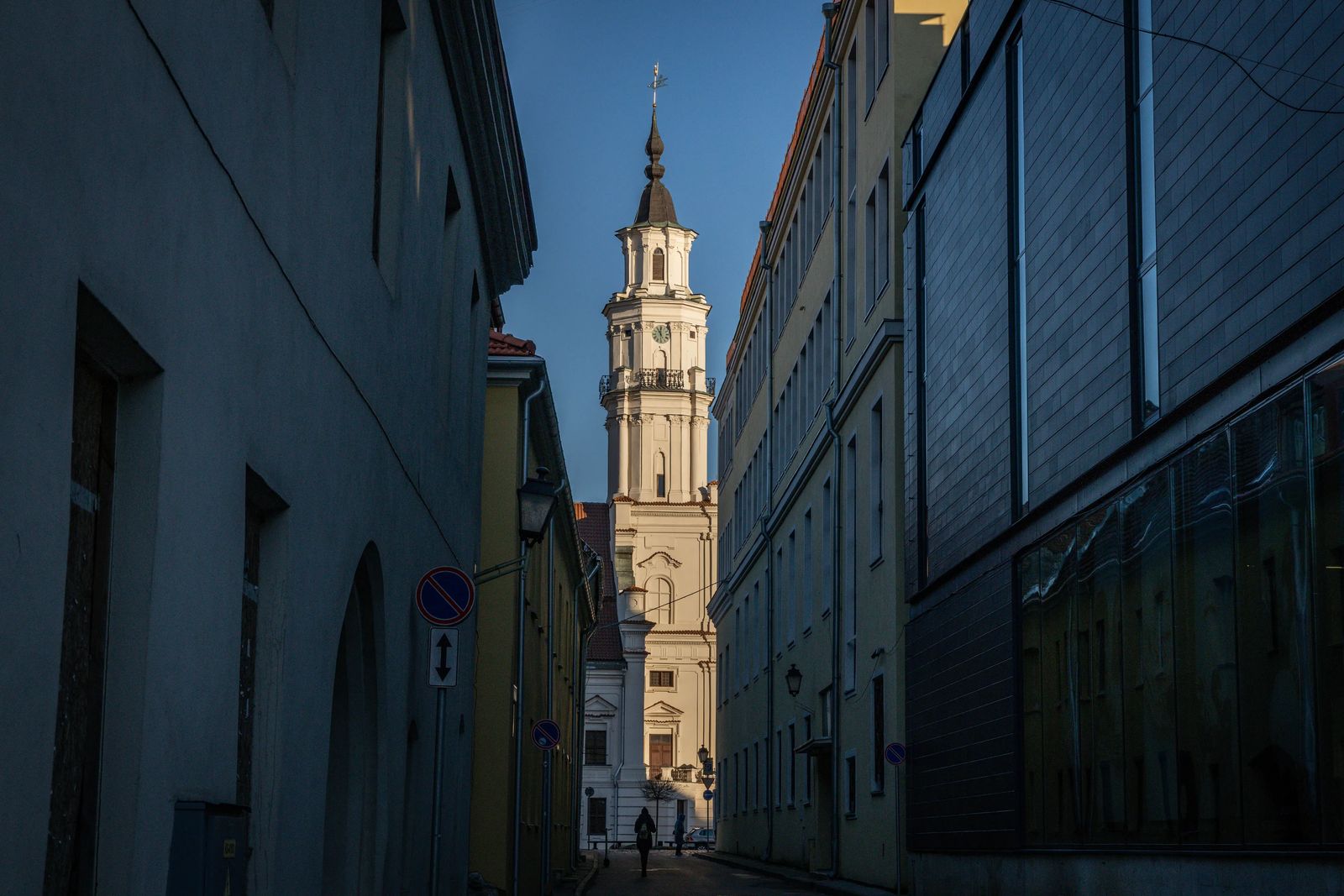
Things To Do In Kaunas Lithuania
Before visiting this Kaunas I had NO IDEA it even existed or why it was important to Lithuania. In fact, in the '90s this city was the interim capital! It is an easy day trip from Vilnius Lithuania, but also an easy stop on your drive to Riga Latvia, and the Hill of Crosses. If you want to see a UNESCO City of Design, this is the place to go. There are so many important elements of Lithuanian history that are captured both in and around this town, it would be a tragedy if you missed seeing it while in Lithuania. Let me give you a few reasons why....
PIN FOR LATER! :) Sharing is caring
How To Get To Kaunas
Location: Located in Lithuania next to the Nemunas River
Transportation: To get to Kaunas it is an hour's drive west of Vilnius, or you can also take the train or bus which is about 1.5 hours. If you download the Trafi app it will help you navigate their public transport. Just make sure you have a phone service that covers the area or buy a sim card when you arrive.
Trains here are mainly operated by AB 'LG Keleiviams, with Vilnius Railway station being the largest in the country it shouldn't be hard to get there.
For myself and my group, we decided to take a tour with Riga Traveller Laura (see her intensely infectious energy in my video above). I cannot recommend taking a tour with her enough because she is a local, has family that was affected by the Russian Occupation, knows the land, the history and LOVES to talk about Lithuania and is incredibly proud of her heritage.
Renting a car is very cheap in Lithuania, but to park here, all the parking is paid, and you will need to have at least 10 euros on hand in cash just in case.
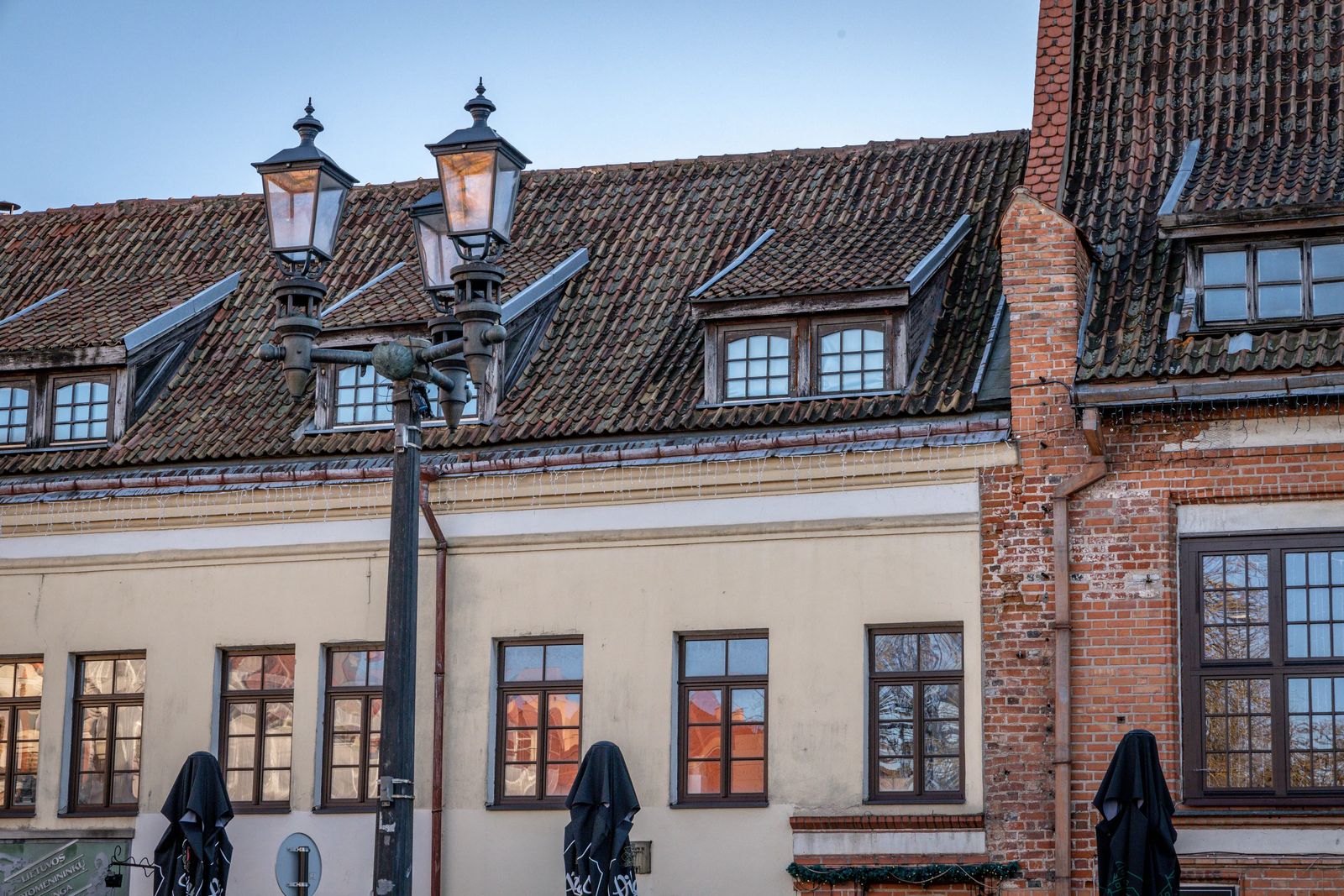
A Brief History of Kaunas
Kaunas was founded as a fortress in 1030 and became an official town in 1317. Because it is located on the southern border of Lithuania, it was frequently attacked by Teutonic Knights. The strategic location of the city, and also abutting a river made it a great city of trade.
In the 17th-century, it was surrendered to Russia by Poland and in the 18th-century Napoleon came in and wiped the town out.
Because of the devastation, Napoleon caused, it made way for the rebuilding of the city in the 19th century with many Art Deco buildings and shops surrounding the town. In 1920-1940 it was the temporary capital of Lithuania, World War II devastated the area again. The Soviet Occupation happened, and riots broke out in the city, tensions were so high a student here lit himself on fire as an expression of protest against the Soviet regime.

The historic buildings that still survive today are the Vytatus Church (1400), the Holy Trinity Church 1634), and the Jesuit Church (1666). If you travel just outside the city of Kaunas you can visit a 17th-century Baroque style Pažaislis Monastery. You also have a Russian Empire Castle here that was built in the 18th century complete with forts, batteries, barracks that surrounds much of the city of Kaunas. It is considered the most well preserved 18-19th century castle in the world. The national museum for war is located here.
You can't miss the Kaunas Castle while here either, but I will go into more detail about this below.
Today it is a modern educational and manufacturing town with an agricultural, veterinary, and medical school. It is Lithuania's second-largest city with a population of 325,000. In the last 20 years, more than 100,000 of its citizens have migrated closer to Vilnius or other cities. While many worried it would leave a hole in the city, it is slowly turning into a hip student town full of life, street art, and cultural immersion into what it means to be Lithuanian.
There are plenty of quirky spots to find that captures the essence of artistic expression like the Museum of Devils.
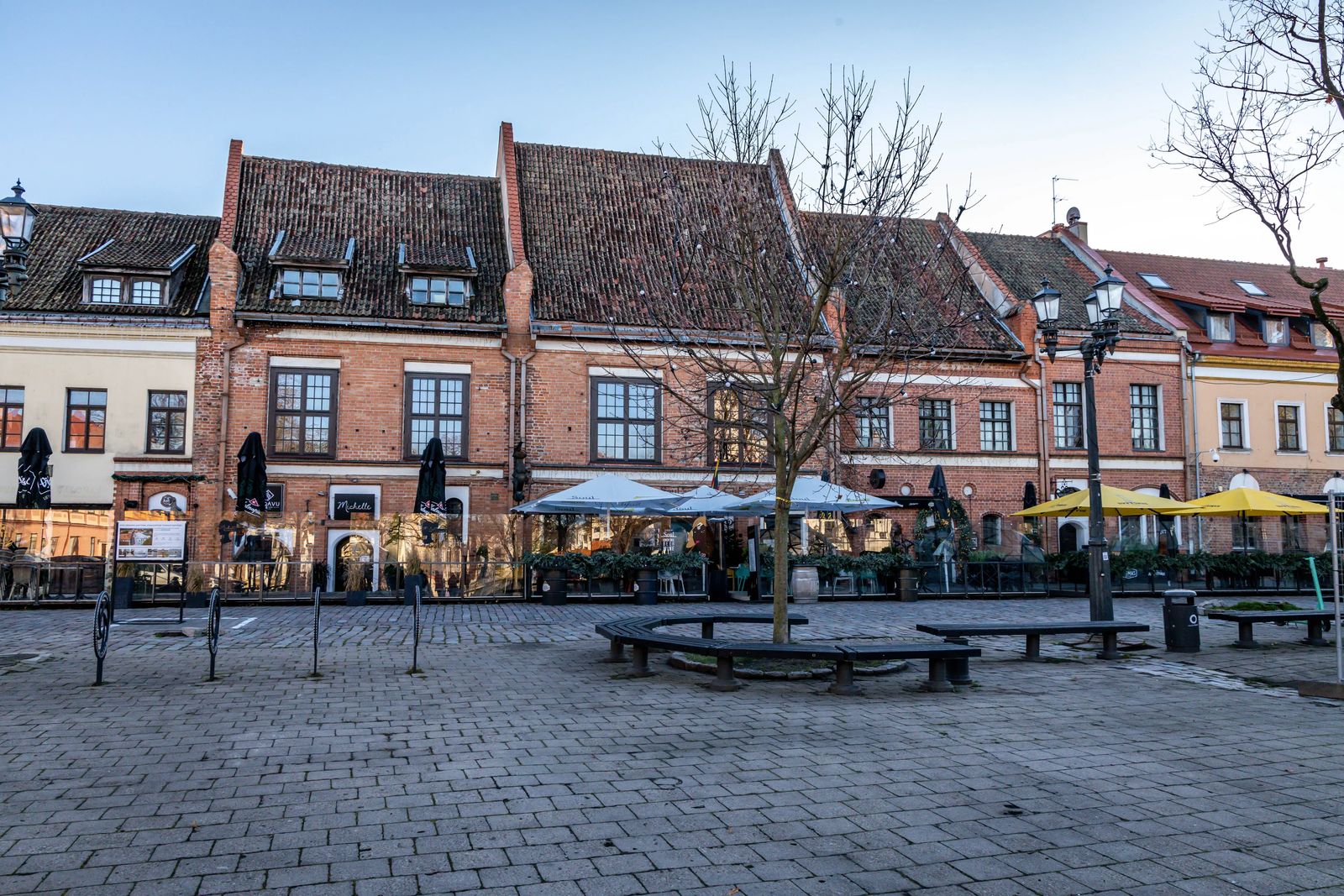
Walk Around Old Town
If you come to Kaunas in the summer months, especially with five churches surrounding the square, and being a major college town -- it is a place of newlyweds and weddings galore. In the winter you will get gorgeous Christmas decorations and shops with delicious coffee (try the Acorn Coffee for SURE).
In the center of the Old Town square you will see the Town Hall (the white building) with a 173 foot (53m) tower built in the 1780s that has the nickname of being 'the Swan'. The tallest spire in this square though actually belongs to the Ascension church (aka Vytatus Church) that had it built-in 1399. This is the oldest building in Kaunas, unfortunately, the interior was destroyed during the Soviet occupation (like many churches in Lithuania) and was used as a basketball court. It has since been restored but such a tragedy that some of that historic cultural identity was lost.
On the south, you have the Baroque Jesuit Church built in the 17th century that has a summer terrace on top. On the west side, you have the St George Church (late 14th century). A Renaissance Holy Trinity Church from the 16th century.
Between all of the five churches that surround the square, you have an example of nearly every architectural style before the 1800s.

St George The Martyr Church
This Roman Catholic church, right by the Kaunas Castle is also a Gothic structure that was rebuilt after it was heavily damaged by the war with Napoleon. During the Soviet Occupation, it was turned into a medical warehouse.
Built-in 1471 by the same man, Danzig, that built St Anne's Church in Vilnius. If you haven't seen my article on Things To See In Vilnius, I included details on that church as it is the main reason Vilnius was named a UNESCO heritage site.
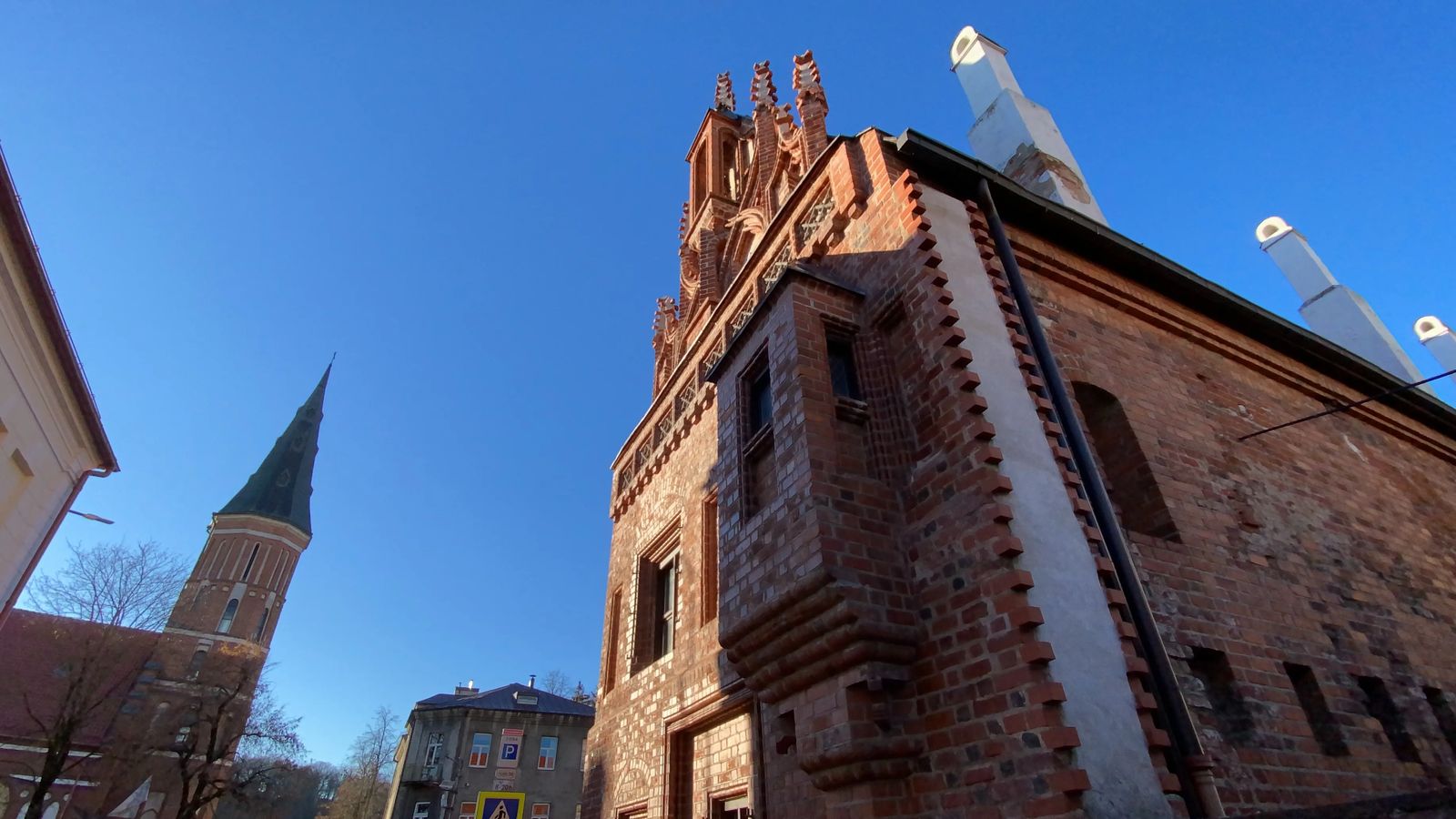
House of Perkūnas - The Flaming House
This is one of the most original Gothic Residential buildings with absolutely STUNNING brickwork! It is right on the corner of the Old Town Square and was built in the 14th century by the powerful Hanseatic Merchants who ruled much of the Baltics at that time. It has the nickname of 'the flaming house' because the top of the facade looks like flames rising into the sky when the sun hits the red brick and lights it up like flames.
It was sold to the Jesuit Order who turned it into a chapel in the 16th century. The house fell Into disrepair in the 17th-18th century but was restored in the 19th century in its original style. When it was being rebuilt they found a Pagan figure in the walls called Perkūnas, he was a God of Thunder and the Sky. After it was rebuilt the Jesuits reclaimed it, and houses a museum of Adam Mickiewicz who is an incredibly important Polish Poet and political activist. He is considered a national poet to Poland, Lithuania, and Belarus.
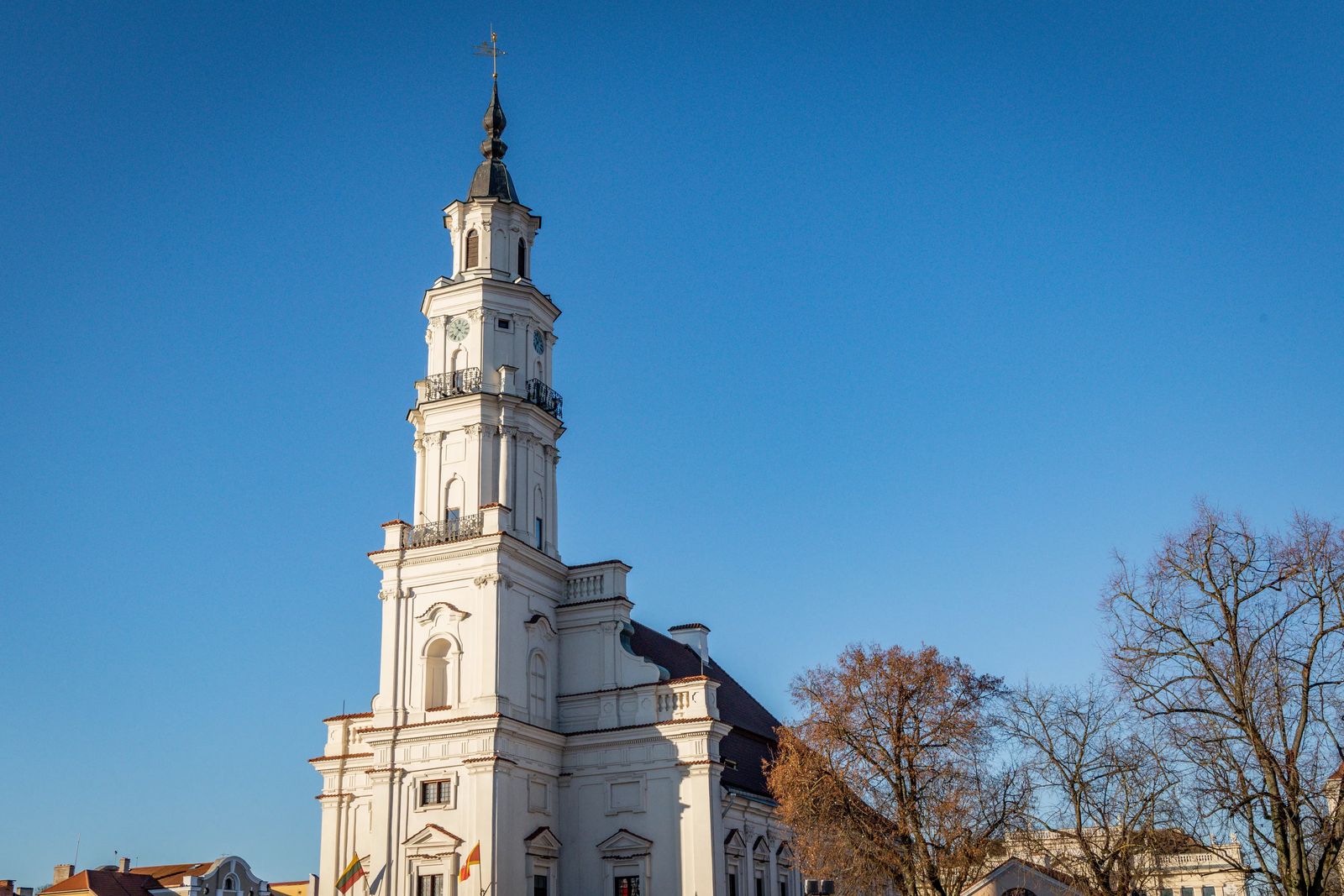
Visit Kaunas City Hall
Built-in the 16th century to help with transactions of merchants that will fill the square in this trade city, it is a beautiful example of renaissance-style architecture. Locals have nicknamed this the 'White Swan' because of the tall long tower that looks like a swan's neck, the tower itself if 173 ft (53 m) high.
This building has seen so many major events from city markets to fairs, and trials. In the 18th century it was reconstructed by the Russian Czars as a wedding hall.
As you enter the building you can see the 15th century wax melting furnace. If you head into the basement you can find a Ceramic Museum, I didn't have a chance to go inside so cannot vouch for its quality.
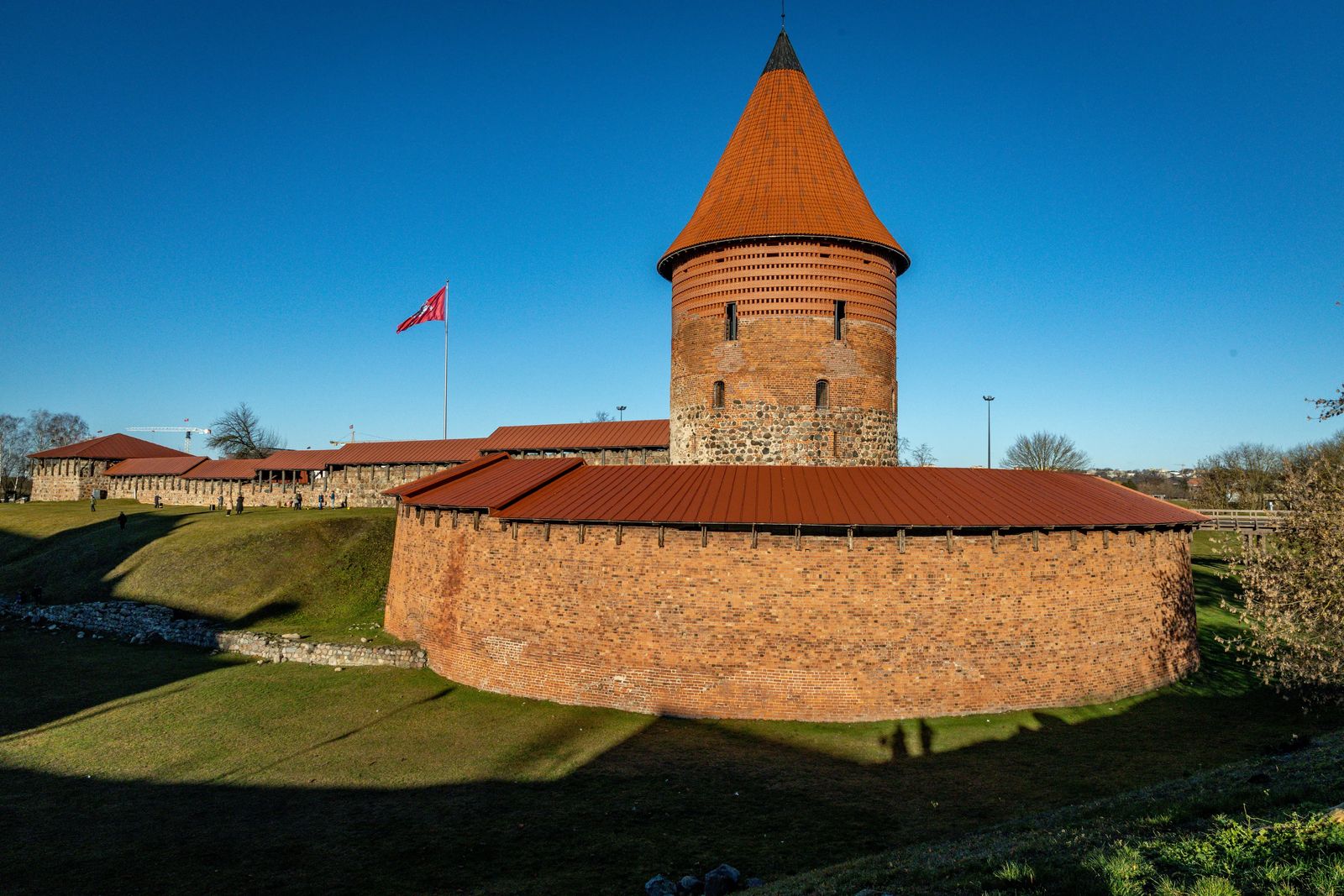
Visit Kaunas Castle
Built-in the 14th century this castle was once the center of trade for this region. They have some small exhibits in the castle, but you have to climb about three flights of stairs to get to the entrance. It is well worth the effort though, it is one of the only stone castles with two defensive walls.
The bastion was once about 130 ft (40m) in diameter, the walls were 39 ft (12m) high. There was a firing gallery and a linked tower along with a trench that made these walls VERY hard to conquer. The Teutonic Knights did overtake this castle but they did lose control never regained the castle.
The first mention of this castle was in written text where legend has it that Queen Bona Sforza's troops disappeared in the tunnels that run underneath the castle. There are rumors that the prison cells and the souls of those troops are haunting the castle basement to this day.
During the 16th century, there were courts, official archives. The 17th century saw the castle occupied by the Swedish military. During these two centuries the river kept flooding the castle requiring its occupants and contents to be evacuated.
It wasn't until the 19th century that the castle was repaired and preserved. Only partial heights of the bastion and tower remain today but honestly, it is stupendously impressive. The 20th century saw the reinstallment of the museum and now plays host to festivals and tours.
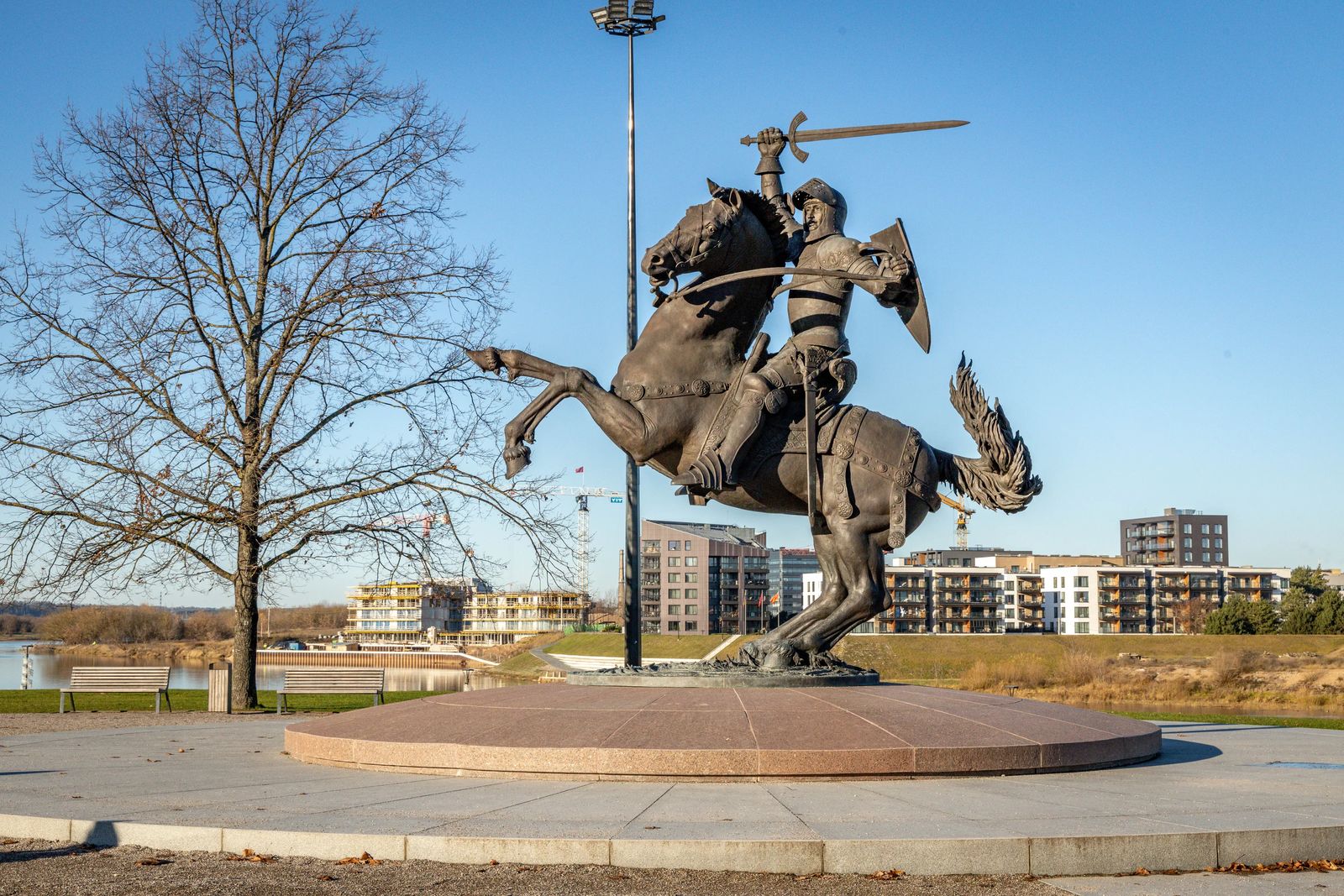
Monument to Vytis
Vyčio paminklas "Laisvės Karys" is the freedom fighter monument just outside the Kaunas Castle and was placed here in 2018. It rises 23 ft (7m) with a sword triumphantly raised over his head. Sculpted by Juozas Zikaras in 1928, it was demolished by the Soviet government and severely damaged. It wasn't until 1989 that the statue was repaired and is an enduring symbol of resistance and pride to the people of Kaunas.

Attend a Festival in Kaunas
If you want to do something really unique, try and plan your trip to Lithuania around a festival. I was able to visit during the Christmas season and the Christmas decorations in this city make the visit even more special. If the cold winters of Lithuania aren't your thing, then here are some other festival options that may interest you.
In January they have the MAMA Music awards, February 16th is the Independence day parade, the first week of April will land you in the agricultural festival with seeds, shrubs, and plants of loads of variety. At the end of May, you have the Kaunas Jazz festival, in mid-May, you have my personal favorite kind of festival the Hansa Days or the Medieval arts and crafts festival.

See The Pagan Shrine & Kanklės player statue
Kanklės player statue is seen playing the Chanclas national Lithuanian musical instrument. It is like our guide said, "Lithuanian people will find ANYTHING to be proud of their independence and country". The statue is quite impressive but was a bit hard to interpret for me personally on what it represented.
Each Thursday in the morning people gather at the Pagan shrine to make a fire and give salt and bread to gods. This meeting typically happens at Santakos Parkas or Confluence park, where the Nemunas and Neris rivers meet. some believe this is the birthplace of Kaunas. Other legends say this is the grove of Milda, the goddess of love, courting, freedom, and friendship.
Lithuania was the last European state to adopt Christianity and Pagan practices were much more tolerated than other European states. The religion still continues today through the Romuvian religion, and a fire altar (aukuras) was made to celebrate the goddess here at confluence park. There are about 5,000 members that consider themselves true Romuvians still.

See Nearby Hill Of Crosses
For nearly two centuries this area has been a place of metal and wooden crosses to be placed in honor of loved ones who have passed on. When you drive up, it doesn't appear as a giant hill until you start exploring the area and there is a large drop off on the back side of the site. It doesn't make it any less impressive though, as well as slightly eerie and sad.
The first mention of this area was in 1850, crosses were left by relatives of those who died against the Russian regime. No matter how many times the Russians came to level and bury the crosses (rumored to be five times), the crosses kept being put here.
There is a legend that the Virgin Mary appeared here holding the baby Jesus and asked the locals to cover this place with crosses. It is because of the hand-carved crosses from so many different sects of religious believers that have been placed here that it is recognized as a UNESCO heritage site.
It was moving to think that so many people have come here to remember and celebrate the lives of those who have touched them. Our guide did say though, it is not a place you want to be visiting at night. You can buy your own cross to leave here, but you will need cash because of how remote it is.
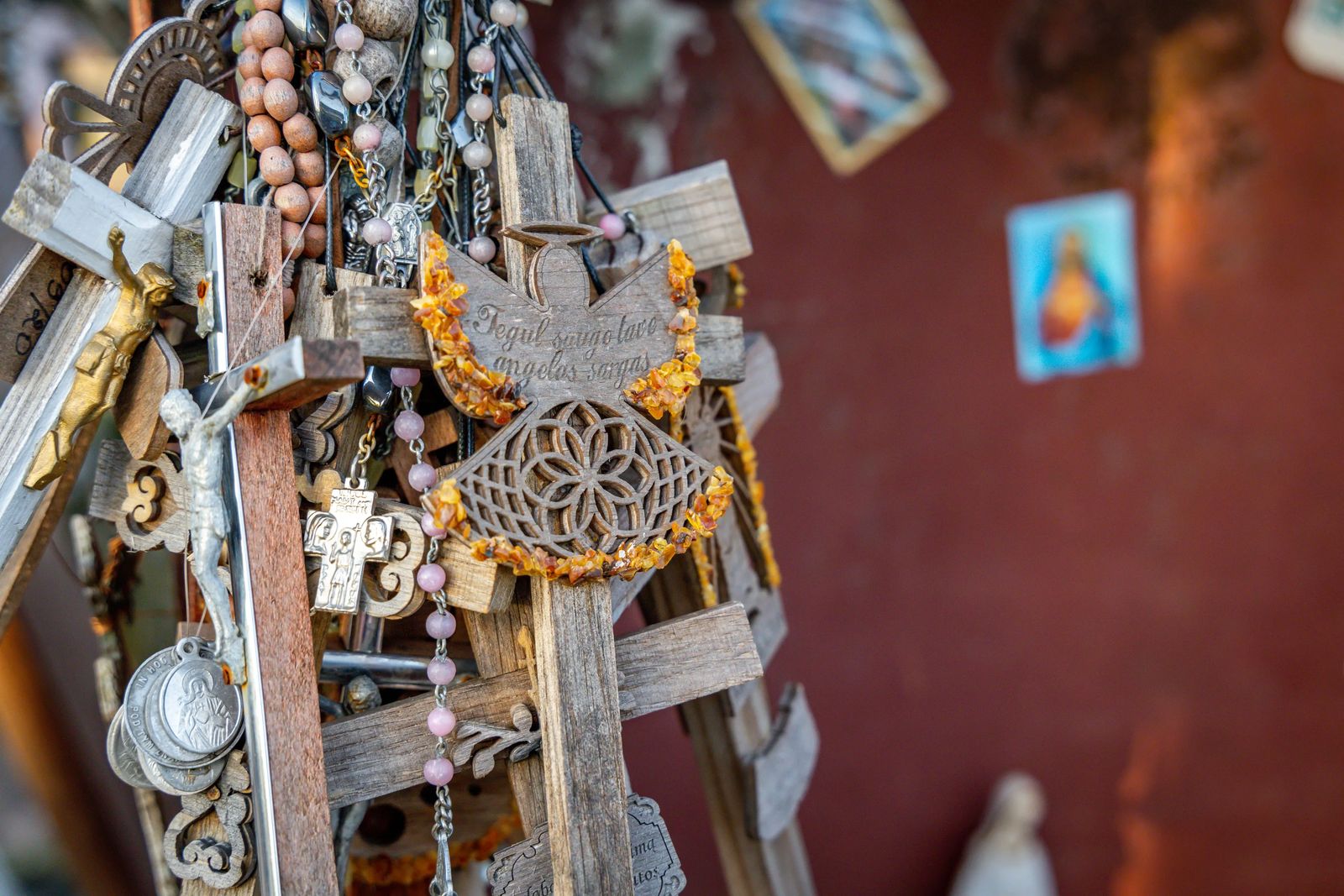
Buy Amber Souvenirs
Those that live in the Baltics take Amber very seriously, and it exists in abundance in Lithuania. Amber has been used as a talisman for courage, self-confidence, and was thought to bring good luck to warriors in battle. In some cultures represents the renewal of marriage vows and was used by Pagan priests as a symbol of endurance and wisdom.
Amber itself is a 50 year old million (on average) fossilized tree sap, but by those who love crystals is thought to be the gemstone of renewal. What many people don't realize is that Amber can come in 300 different colors and shades from blue, white, green, black and red with the rarest form being Blue Amber. The most common colors are the yellow and orange ambers you often find at markets and Christmas Market stalls throughout Lithuania.
So if you are in the area of the Hill of Crosses or in the Baltics during Christmas, be sure to pick yourself up some Amber souvenirs.

Street Art In Kaunas
Being a major college town there are so many hot spots to see street art in Kaunas. You have the Gallery Yard, the Wise Old Man (featured above), Star Seeder, The Pink Elephant, He & She, the Neo Fresco for the 90th anniversary of Lithuanian National Radio art, and many more.
To get a map of where to see all of these street art installations Visit Kaunas has an example of each. Here is a map of Kaunas and different themes of tours you can take within the city. Trust me when I say you can walk for a whole week and still not be able to see all the incredible street art contained in Kaunas.
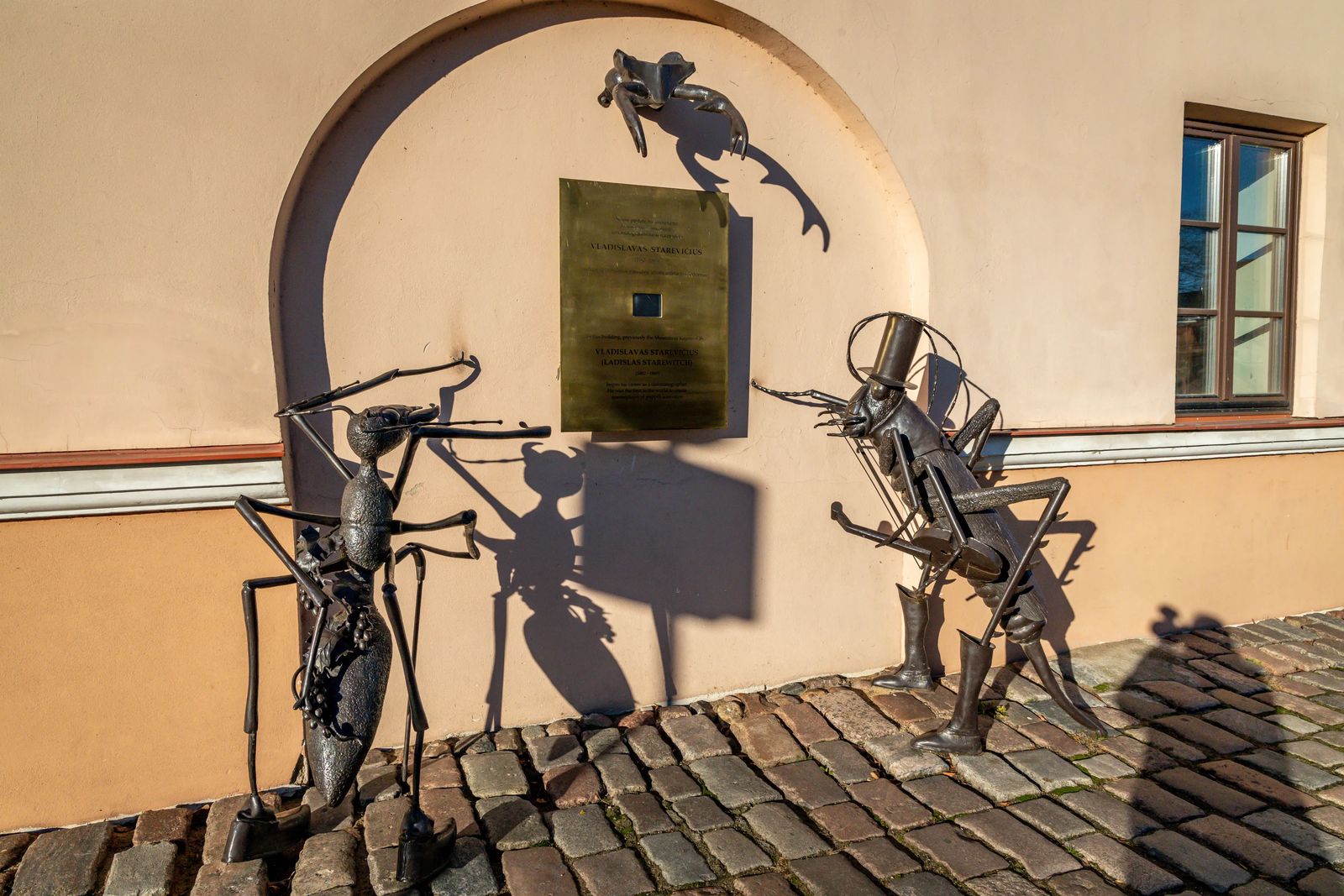
Władysław Starewicz Memorial
This Memorial is dedicated to the puppet animator pioneer Władysław Starewicz. Many people in Lithuania consider him to be the European Walt Disney and is said to have worked inside this building for quite some time. The three main characters of his work were a stag-beetle, an ant, and a grasshopper pictured here.

St Michael the Archangel Church
Built-in the 18th century when Kaunas was part of the Russian empire, this Neo-Byzantine style Roman Catholic church is well worth the effort to see. After the fall of the Kaunas fortress during World War I, the Germans cut down the original bells and took them to Germany. The church remained closed until 1919 until the interwar period made it a Roman Catholic church and worship inside its walls resumed.
It isn't just the architecture that makes this special, with its 266 columns, but is has a museum specifically designed for the visually impaired for in the basement! I LOVE it when cities try to be inclusive to those with disabilities of all types. This feature was added by the Lithuanian sculptor Robertas Antinis and architect Linas Tuleikis.

The Ninth Fort Memorial
This mammoth structure, designed by sculptor Alfonsas Vincentas Ambraziunas was built in 1984. It pays homage to the Ninth Fort, a Nazi execution site for the Jewish people who were murdered from the Kovno Ghetto. The structures rise 105 feet (32 m) and are placed over mass burial sites that were found here.
If you attend, go at sunset for stunning views. There is an inscription on the sculpture that reads "This is the place where Nazi's and their assistants killed about 45,000 Jews from Lithuania and other European countries". If you combine this with Salaspils Memorial Ensemble(near Riga) I can guarantee you will be moved to tears, between these two sites you really get a sense of the symbolism of pain, sorrow and can imagine the tortures that this group of people endured at the hands of fellow humans.
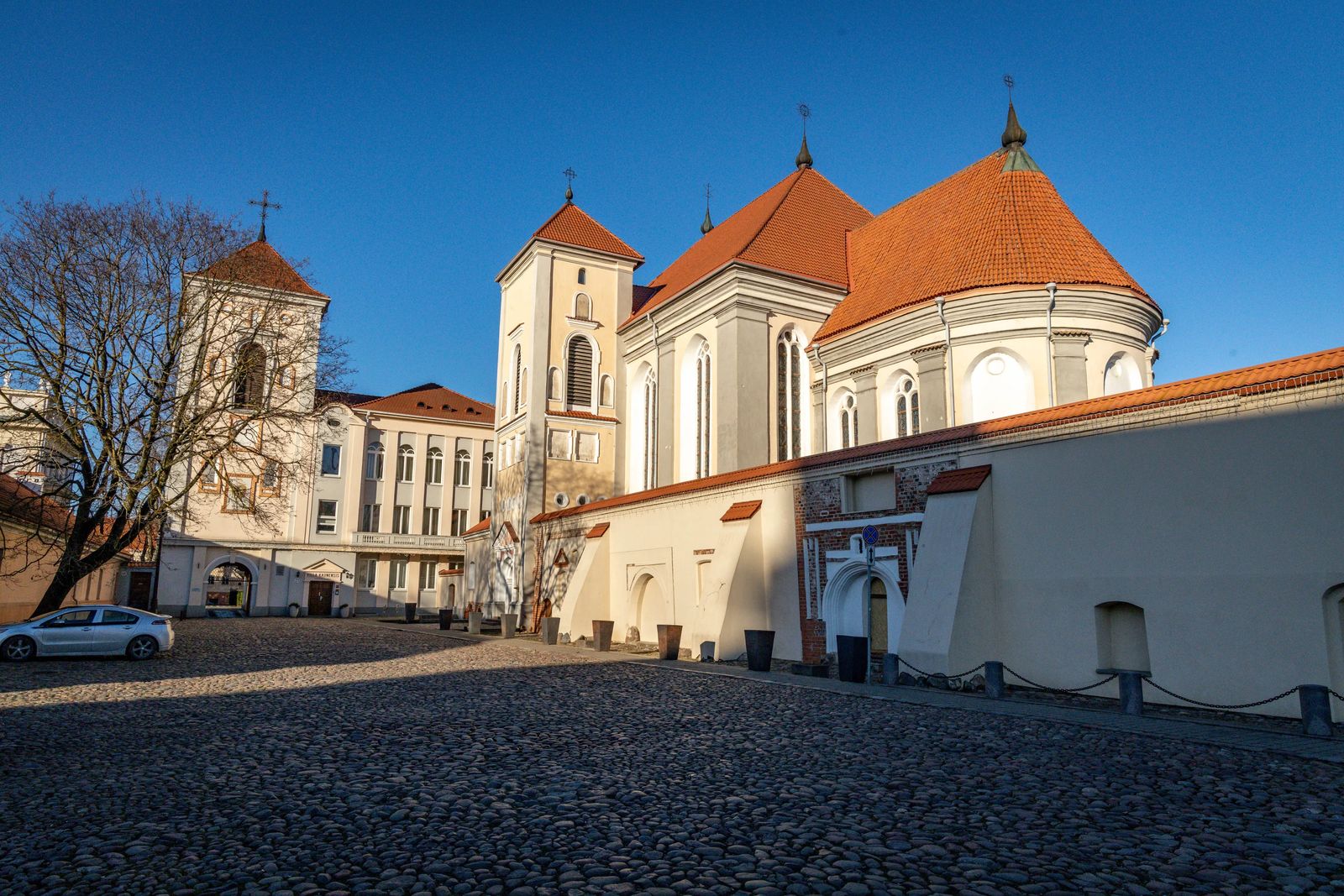
My Takeaway Of Visiting Kaunas
If you have the time, I think Kaunas is most definitely worth a visit, especially if you love architecture, knights, castles, and street art. There are so many quirky fun things to see in the city. It has a feeling of a hip town melded with an ancient past, and a summer cafe scene I hope to return to experience one day. While my time there was very brief, I would suggest giving yourself at minimum two days to see all the sites properly and truly soak in the Lithuanian culture here.
Latest Articles On Culture Trekking
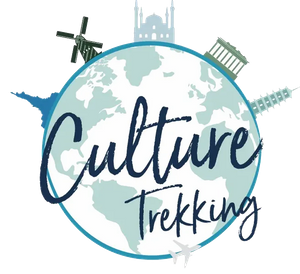

Welcome to Culture Trekking!
My name is Janiel, a leader in the travel industry with over 20+ years of experience with international travel. I specialize in solo female travel, cultural connections, sustainable adventures, food and history to help make your travel experiences fun, meaningful, and delicious. My experience in travel, and my personal story have allowed me to get published in Fodor's Travel, Atlas Obscura, Metro.co.uk, Trip Advisor, and multiple Podcast interviews. You can find me on pretty much every social media channel YouTube, Instagram, Twitter, Facebook, Pinterest, TikTok. To read more about me and my story click here. If you are a brand and would like to work with me, click here.














